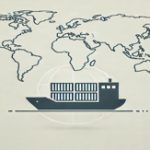Global trade offers countless opportunities but also presents unique challenges, including export sanctions and embargoes. These restrictions can halt your operations or lead to severe penalties if mismanaged. This guide walks you through understanding, managing, and navigating export sanctions and embargoes effectively while maintaining compliance.
Understanding Export Sanctions and Embargoes
Export sanctions and embargoes are like speed bumps on the international trade highway. Sanctions are government-imposed restrictions targeting specific countries, individuals, or entities. Embargoes, on the other hand, are complete bans on trade with particular nations or regions.
These restrictions are often implemented to achieve foreign policy or security goals. They can range from outright bans on goods to financial restrictions or technology transfer limits. Knowing the difference is critical because not all trade halts are created equal.
For instance, trading goods with North Korea or certain industries in Russia involves navigating complex and layered sanctions. Ignorance of such rules can leave your business exposed to fines, reputational damage, or even criminal charges.
Why Export Sanctions Exist
Imagine the global market as a giant chessboard. Sanctions are a move that powerful nations use to apply political or economic pressure. These measures are typically enacted to:
- Curb human rights violations.
- Prevent nuclear proliferation.
- Punish aggressive actions or terrorism support.
The ripple effects of sanctions reach businesses, often leaving exporters grappling with compliance. But hey, knowing why they exist makes dodging those compliance pitfalls much easier!
Recognizing the Risks of Non-Compliance
Non-compliance is not just a slap on the wrist; it’s more like a full-body tackle. Violating sanctions can lead to:
- Hefty fines – Multi-million-dollar penalties can cripple small businesses.
- Legal action – Jail time for executives isn’t unheard of.
- Damaged reputation – A compliance failure can tank trust and credibility.
A notable case involves a multinational corporation fined billions for trading restricted goods. If they could stumble, imagine the risks for smaller players!
How to Stay Ahead with Sanctions Compliance
Compliance starts with vigilance. Let’s explore practical steps to ensure your business doesn’t end up in hot water.
1. Understand the Laws of Target Markets
Knowledge is your first defense. Familiarize yourself with the sanctions imposed by your home country and the target nation. For instance, the U.S. Office of Foreign Assets Control (OFAC) frequently updates its sanctions list, which includes restricted countries, entities, and individuals.
2. Use Trade Compliance Software
Gone are the days of manually cross-checking sanction lists. Trade compliance software automates the process, reducing human error and saving time. Some tools also alert you to policy updates, ensuring you’re always in the know.
Engaging Experts for Due Diligence
When in doubt, call the pros. Trade lawyers and consultants specialize in understanding the nitty-gritty of sanctions. While their services might seem expensive, think of it as paying for a seatbelt rather than facing a crash.
Pro tip: When hiring experts, ensure they have experience with your industry and export destinations.
Diversifying Export Destinations
Putting all your eggs in one basket is risky in a world of sanctions. Consider exploring new markets unaffected by embargoes. For example, if political tensions escalate in one region, diversifying can shield your revenue streams.
Here’s where humor sneaks in: Think of it as not dating someone who gets grounded often—it saves you from the drama!
Monitoring and Responding to Updates
Sanctions aren’t set in stone; they evolve. A country blacklisted today might be a trading ally tomorrow. Staying informed is essential. Subscribe to government alerts, join export trade groups, or designate a compliance officer to monitor changes.
Remember, ignorance of the law is no defense. Staying updated keeps you proactive, not reactive.
Building Relationships with Regulatory Authorities
It’s not what you know; it’s who you know—well, sort of. Developing a rapport with regulatory bodies can offer clarity when sanctions seem murky. They might even provide waivers for specific transactions.
Take time to reach out, ask questions, and get on their good side. Just don’t overdo it—you’re an exporter, not a pen pal.
Real-Life Example: Thriving Amid Sanctions
Consider the case of a European tech company barred from exporting to Iran. By pivoting to compliant trade practices, including ensuring no dual-use technology was involved, they managed to secure deals in safer markets. This adaptability kept their profits flowing while avoiding legal trouble.
The lesson? Sanctions can be a detour, not a dead end, if you stay flexible.
Common Mistakes to Avoid
- Ignoring Local Partners’ Activities
Your local distributor’s actions can pull you into violations. Always vet their operations and ensure they follow the rules. - Relying on Outdated Lists
Sanctions lists change faster than a trending hashtag. Outdated information can lead to accidental breaches. - Skipping Internal Training
Your team is your frontline defense. Train them to spot red flags and act swiftly.
Conclusion: Turn Sanctions into Strategic Advantage
Navigating export sanctions and embargoes requires strategy, awareness, and flexibility. While these barriers seem daunting, they can also push your business to innovate, diversify, and stay ahead of the competition.
Think of sanctions as roadblocks on your global journey. With the right map (compliance), tools (technology), and allies (experts), you can steer clear of trouble and thrive in the ever-changing trade landscape.
Remember: It’s not about avoiding sanctions entirely; it’s about navigating them smartly.
You can contact us on WhatsApp to discuss this topic further.




